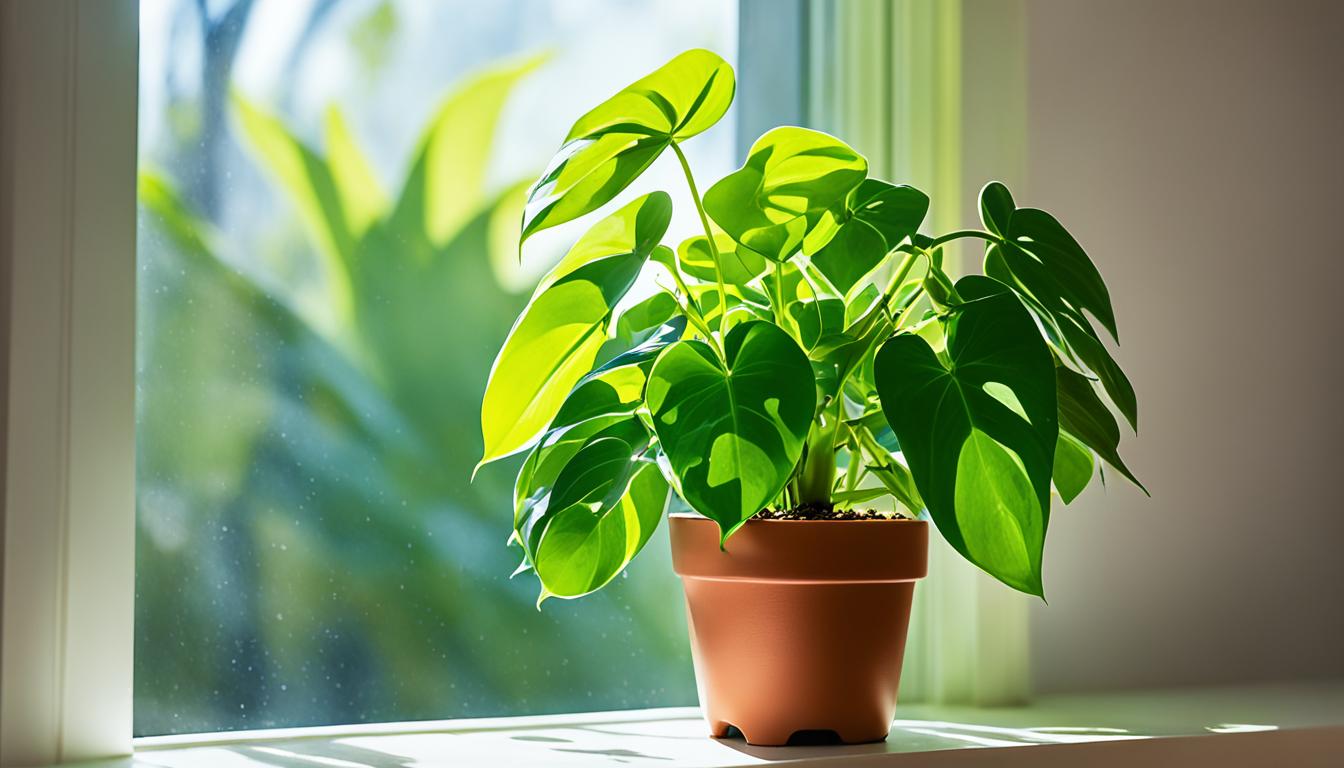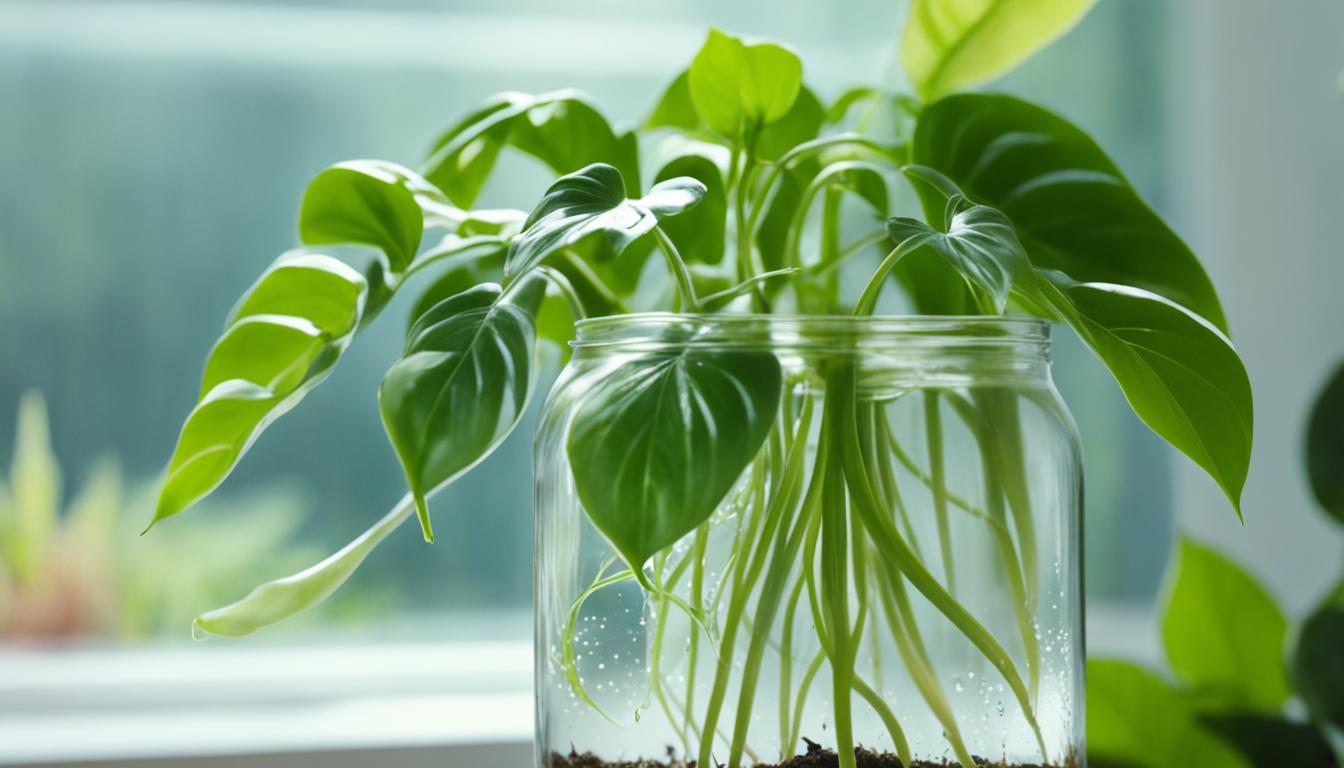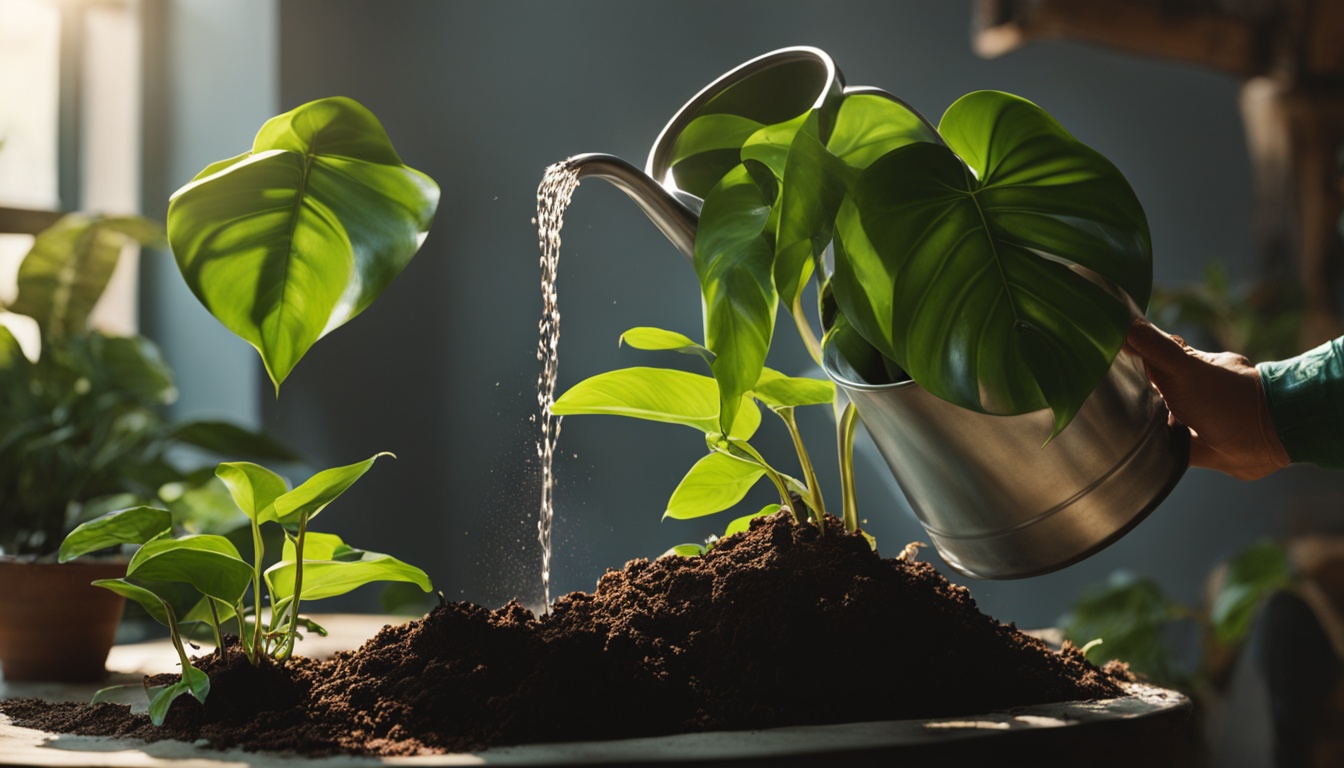Did you know the largest philodendron plant is 19 feet tall and 33 feet wide? These plants look like they need a lot of work. But, with some care, beginners can grow them well. This guide will help you start with vining or non-climbing types for your home.
Key Takeaways
-
Philodendrons are relatively easy to propagate and care for, making them a great choice for both novice and experienced plant enthusiasts.
-
There are two main types of philodendrons: vining and non-climbing varieties, each with their own unique growth habits and care requirements.
-
Propagating philodendrons from stem cuttings is the most common method, but they can also be grown from seed.
-
Proper watering, lighting, and fertilization are essential for keeping philodendrons healthy and thriving indoors.
-
Philodendrons are susceptible to common houseplant pests and diseases, but many issues can be prevented or treated with proper care.
Understanding Philodendron Plants
Philodendrons are tropical plants with over 450 types and colors. You can find them in two main kinds: vining and non-climbing. Learning about these can help you pick the best philodendron for your place.
Vining vs Non-Climbing Varieties
The vining philodendrons, like the philodendron scandens, have long stems. They can climb high on supports or hang over shelves. On the other hand, the philodendron bipinnatifidum grows like a bush. It doesn’t need any help to stand straight.
Distinguishing Features
What makes philodendrons unique is their big, green leaves. The leaves can be small or very large, with different shapes and textures. For example, the philodendron xanadu has special, deeply cut leaves. And the philodendron erubescens has shiny, heart-shaped leaves.
Popularity as Houseplants
People love philodendrons for indoor gardening. They don’t need much care and they grow well in many places. Vining or non-climbing, these plants bring a bit of jungle feel to your home. That’s why they are a top choice for decoration and greenery.
How to Propagate a Philodendron
Philodendrons are easy to grow more of. You can get more plants for yourself or share with friends. Stem cutting, water, and soil are the main ways. Rooting hormone can help too.
Stem-cutting propagation
Stem cutting is a simple way to grow a new philodendron. Cut a 3-6-inch piece, making sure it has a leaf. Put the cut end in rooting hormone to grow roots faster. Then, plant it in a well-draining mix. Water well and keep it warm and bright. New leaves should show up in about 4–6 weeks.
Water Propagation
In water, philodendrons grow easily too. Cut a stem and put it in water. Change the water often. After a few weeks, you’ll see roots. When the roots are a few inches long, move the cutting to soil. Use a mix that can drain well.
Soil Propagation
Growing in soil is another method. Plant a stem cutting in a mix that drains well. Keep the soil wet and the cutting in a sunny spot. You’ll see new growth in 4-6 weeks. This means the root is growing well.
Using Rooting Hormone
A rooting hormone isn’t a must, but it can really help. It makes roots grow faster and stronger. This is great for types that are hard to grow or in bad growing seasons.
How to start a philodendron
Want to grow philodendrons on your own? The most common way is by cutting. But you can also start them from a seed.
Growing from Seeds
Plant philodendron seeds deep in good soil. Water and keep it warm. After a month, little plants should start to grow.
Choosing the Right Potting Mix
The soil you choose is very important. Use a mix that drains well and is full of nutrients. It should be made for starting seeds or growing in containers. Your philodendron will love it.
Ideal Pot Size and Drainage
As it grows, move your philodendron to a bigger pot. Make sure the pot lets water out. It shouldn’t be too big, just a bit larger than the roots. This helps the plant grow but not drown.
Caring for Your Philodendron
Taking care of your philodendron is key to its well-being. They love bright, indirect light. Water your plant every week, but check first.
Watering Requirements
Your philodendron likes moist soil, not soggy soil. Only water when the top is dry to avoid root rot. Pay attention to its needs.
Light Needs
Philodendrons enjoy bright, indirect light. They can handle some direct sun. But too much can harm their leaves.
Make sure they get enough light but watch for issues. Adjust if you see stretching or color changes.
Fertilizing Schedule
Keep your philodendron healthy with liquid fertilizer every 4–6 weeks in the growing season. Don’t overdo it. Too much can hurt the plant.
Always use the right amount and dilute the fertilizer as needed.
Pruning and Maintenance
Regular care makes your philodendron look better. Cut dead leaves with sharp scissors. This helps new leaves grow.
Also, clean the leaves to avoid pests and diseases. With these tips, your plant will do well.
Conclusion
Philodendrons are perfect for new or expert plant lovers. They come in vining or non-climbing types. They are easy to grow and look after, fitting well in any home garden.
This guide helps you start your own philodendron plant. You’ll learn about the different types and how to care for them. With the right steps, you can enjoy these beautiful plants in your home.
So, why not start your philodendron journey today? These plants make your home feel like a tropical paradise. Enjoy growing your philodendron and making it a special part of your living space.
<div class="quiz-container">
<h1> How to Start a Philodendron Plant: A Beginner's Guide </h1>
<form id="philodendron-start-quiz">
<div class="question">
<h2>1. What is the first step in starting a philodendron plant?</h2>
<label>
<input type="radio" name="q1" value="a"> Buying seeds
</label>
<label>
<input type="radio" name="q1" value="b"> Taking cuttings ✂️
</label>
<label>
<input type="radio" name="q1" value="c"> Buying a mature plant
</label>
<label>
<input type="radio" name="q1" value="d"> Fertilizing soil
</label>
</div>
<div class="question">
<h2>2. How long should a stem cutting be for successful propagation?</h2>
<label>
<input type="radio" name="q2" value="a"> 1-2 inches
</label>
<label>
<input type="radio" name="q2" value="b"> 3-6 inches
</label>
<label>
<input type="radio" name="q2" value="c"> 7-10 inches
</label>
<label>
<input type="radio" name="q2" value="d"> Over 10 inches
</label>
</div>
<div class="question">
<h2>3. What type of water should you use for rooting philodendron cuttings?</h2>
<label>
<input type="radio" name="q3" value="a"> Tap water
</label>
<label>
<input type="radio" name="q3" value="b"> Distilled water
</label>
<label>
<input type="radio" name="q3" value="c"> Saltwater
</label>
<label>
<input type="radio" name="q3" value="d"> Soda
</label>
</div>
<div class="question">
<h2>4. How long does it typically take for roots to develop on a philodendron cutting?</h2>
<label>
<input type="radio" name="q4" value="a"> 1-2 days ⏰
</label>
<label>
<input type="radio" name="q4" value="b"> 1-2 weeks
</label>
<label>
<input type="radio" name="q4" value="c"> 3-4 weeks ️
</label>
<label>
<input type="radio" name="q4" value="d"> 2 months
</label>
</div>
<div class="question">
<h2>5. When should you transfer a rooted cutting to soil?</h2>
<label>
<input type="radio" name="q5" value="a"> As soon as roots appear
</label>
<label>
<input type="radio" name="q5" value="b"> When roots are 1-2 inches long
</label>
<label>
<input type="radio" name="q5" value="c"> When roots are 3-4 inches long
</label>
<label>
<input type="radio" name="q5" value="d"> Never, keep in water forever
</label>
</div>
<button type="button" onclick="checkAnswers()">Submit</button>
</form>
<div id="results"></div>
</div>
<style>
.quiz-container {
font-family: Arial, sans-serif;
max-width: 600px;
margin: auto;
padding: 20px;
border: 2px solid #4CAF50;
border-radius: 10px;
background-color: #f9f9f9;
}
h1 {
text-align: center;
color: #4CAF50;
}
.question {
margin-bottom: 20px;
}
label {
display: block;
margin: 5px 0;
}
button {
display: block;
width: 100%;
padding: 10px;
background-color: #4CAF50;
color: white;
border: none;
border-radius: 5px;
cursor: pointer;
}
button:hover {
background-color: #45a049;
}
#results {
margin-top: 20px;
text-align: center;
}
</style>
<script>
function checkAnswers() {
const answers = {
q1: 'b',
q2: 'b',
q3: 'b',
q4: 'b',
q5: 'b'
};
let score = 0;
const form = document.getElementById('philodendron-start-quiz');
const results = document.getElementById('results');
const formData = new FormData(form);
formData.forEach((value, key) => {
if (value === answers[key]) {
score++;
}
});
results.innerHTML = `<h2>Your Score: ${score}/5</h2>`;
if (score === 5) {
results.innerHTML += `<p> Excellent! You are a Philodendron starting expert! </p>`;
} else if (score >= 3) {
results.innerHTML += `<p> Good job! Keep up the great work in starting your plants! </p>`;
} else {
results.innerHTML += `<p> Keep learning and your Philodendrons will thrive! </p>`;
}
}
</script>
How to Start a Philodendron Plant: A Beginner’s Guide
Related Articles:
Source Links
how-to-start-a-philodendron


